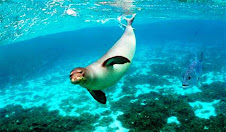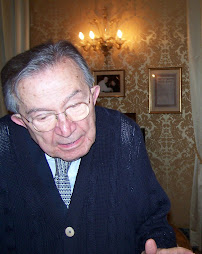di Roberto Maurizio

Mani sempre più pulite, ma vuote
L’Aiuto pubblico allo sviluppo (Aps), cioè la quantità di denaro che viene devoluto dai paesi donatori a quelli poveri, è stato sempre trattato, soprattutto in Italia, come un’elemosina per lenire la “fame nel mondo”. Invece, l’Aps (in inglese Oda) è uno dei principale motori della politica internazionale. La cooperazione allo sviluppo è l'arma basilare della politica estera dei governi e serva come trampolino di lancio delle imprese nazionali. Lo sanno bene i francesi, i tedeschi, gli inglesi e, perfino, i cinesi. Chi lo ignora da sempre: gli italiani. Negli anni ’70, il nostro Aps, in valori percentuali rispetto al Pnl (Prodotto nazionale lordo) era il più basso (0,08%) dei 22 paesi membri del Dac (Comitato d’aiuto allo sviluppo) dell’Ocse (Organizzazione per la cooperazione allo sviluppo). Un’inversione di tendenza avvenne alla fine del decennio ’70, con l’approvazione della legge n° 38 del 9 febbraio 1979. Negli anni ’80, con i governi di centro sinistra di una volta (Psi-Dc) si raggiunse il massimo storico: il nostro paese entrò a far parte dei paesi chiamati Like-Minded, i più forti nell’Aps (0,38% del Pnl), l’élite. Mani pulite che si abbattè nei primi anni ’90 sull’Italia come un tornado, mise in ginocchio la nostra Cooperazione allo sviluppo, indicata come il centro di tutte le malversità del sistema politico Dc-Psi. I due partiti furono distrutti, ma venne distrutta anche la Cooperazione allo sviluppo, grazie anche al caso della giornalista del Tg3, Ilaria Alpi.
L’Aiuto pubblico allo sviluppo all’1% del Pnl
E’ difficile farsi capire. In tempi “bui” come questi, non si capisce perché occorra proporre alla gente, spaventata dalla crisi finanziaria e incapace di reperire le risorse necessarie per la terza settimana, di mobilitarsi per costringere il governo ad aumentare le risorse in favore dei paesi in via di sviluppo. La risposta è semplice: il Made in Italy risente della crisi delle borse nei paesi ricchi, allora apriamo il nostro mercato ai paesi meno fortunati. Sembra una proposta cinica, ma non è tale. L’aiuto come elemosina non genera ricchezza, l’aiuto per la cooperazione produce un meccanismo capace di produrre valore aggiunto. Nessun governo italiano ha mai pensato a questo. Il Ministero degli Affari Esteri, che dovrebbe essere il primo fra tutti, svolge una funzione di sudditanza nei confronti del Ministero dell’Economia. Il nostro provincialismo ci porterà alla rovina. Allora, aumentiamo gli aiuti per lo sviluppo.
L’articolo in inglese che segue, preso dal sito del Dac, rileva come l’Italia si distingua da sempre tra i paesi donatori fanalini di coda. Per far tornare l’Italia tra i paesi Like-Minded ho lanciato su Facebook la campagna: Aumentiamo l’aiuto pubblico allo sviluppo: obiettivo 1% del Pnl.
L'aiuto Dac nel 2007
04/04/2008 - The 22 member countries of the OECD Development Assistance Committee, the world’s major donors, provided USD 103.7 billion in aid in 2007. The 2007 outturn reflects: the end of exceptionally high levels of debt relief (notably for Iraq and Nigeria) a small increase in other official development assistance. Overall, most donors are not on track to meet their stated commitments to scale up aid and will need to make unprecedented increases to meet the targets they have set for 2010. Total ODA in 2007
Total ODA in 2007
With the end of exceptionally high debt relief, total official development assistance (ODA) from members of the Development Assistance Committee (DAC) fell by 8.4% in real terms in 2007 to USD 103.7 billion, according to provisional data reported by members. This represents a drop from 0.31% of members’ combined gross national income in 2006 to 0.28% in 2007 (see Table 1 and Chart 1).
The fall was expected. ODA had been exceptionally high in 2005 (USD 107.1 billion) and 2006 (USD 104.4 billion), due to large Paris Club debt relief operations for Iraq and Nigeria. Debt relief grants diminished in 2007 to USD 8.7 billion as the Paris Club operations tapered off (see Table 2).
Excluding debt relief grants, DAC members’ net ODA rose by 2.4%.
Bilateral aid to sub-Saharan Africa, excluding debt relief, increased by 10% in real terms. This represents an improvement on the recent rate of increase. But it is clear that donors still face a real challenge to meet the Gleneagles G-8 summit projection to double aid to Africa by 2010.
Donor performance
The largest donors in 2007, by volume, were the United States, followed by Germany, France, the United Kingdom and Japan. The only countries to exceed the United Nations target of 0.7% of GNI were Denmark, Luxembourg, the Netherlands, Norway and Sweden.
In 2007, net ODA by the United States was USD 21.8 billion, representing a fall of 9.9 % in real terms. Its ODA/GNI ratio fell to 0.16%. This fall was mostly due to debt relief, which was high in 2006, and a reduction in ODA to Iraq. Excluding debt relief, there was an increase in ODA to sub-Saharan Africa (+4.4% in real terms to USD 4.5 billion) and the Least Developed Countries (+4.0% to USD 4.8 billion). ODA to Afghanistan increased (+11.7% to USD 1.6 billion) and remained important to Iraq (-25.5% to USD 3.7 billion). The United States’ ODA to fight HIV/AIDS increased by 26.1% to USD 3.4 billion.
Japan’s net ODA was USD 7.7 billion, representing 0.17% of GNI. The 30.1% fall in real terms was in part due to a decrease in debt relief operations, which were exceptionally high in 2005 and 2006, and to a decrease in contributions to international financial institutions. Japan’s ODA has been on a downward trend since 2000, except for an increase in 2005 and 2006 due to debt relief.
The combined ODA of the fifteen members of the DAC that are EU members – which represents 60% of all DAC ODA - fell by 5.8% in real terms to USD 62.1 billion, representing 0.40% of their combined GNI. The fall was mainly due to a decrease in debt relief grants. Excluding these, net ODA from DAC EU members rose by 8.8%.
Aid rose in real terms in nine DAC EU countries as follows:
Germany (+5.9%), reflecting an increase in bilateral aid and contributions to international organizations;
Ireland (+4.6%), maintaining its ODA/GNI ratio at 0.54% despite the strong increase in Irish GNI;
Luxembourg (+11.7%), due to the general scaling up of its aid;
Spain (+33.8%), mainly due to a rise in its multilateral contributions, within a planned process of sustained scaling-up of its aid;
Austria (+7.6%), Denmark (+2.9%), Finland (+5.5%), Greece (+5.3%) and the Netherlands (+3.1%) also increased their aid.
Aid from many DAC EU countries fell in real terms, due mainly to decreased debt relief: Belgium ( 11.2%), France (-15.9%), Italy (-3.6%), Portugal (-9.4%), Sweden (-2.6%) and the United Kingdom ( 29.1%). Excluding debt relief (see Table 2), aid rose in these countries with the exception of Portugal and the United Kingdom (where net ODA decreased slightly due to sales of equity investments).
Net ODA by the European Commission rose by 3% to USD 11.8 billion mainly due to increased programme and project aid. Humanitarian aid also increased, and the EC’s disbursement capacity continued to improve.
ODA from other DAC countries rose or fell from 2006 to 2007 as follows:
Australia (+1.0%) as increased bilateral ODA offset the return to normal levels of debt relief;
Canada (-2.7%), due to a fall in contributions to multilateral organizations as well as reduced debt relief;
New Zealand (+3.7%);
Norway (+13.4%), in large part due to increased equity investment;
Switzerland (-3.0%), due to a lower volume of debt relief.
The following non-DAC economies also reported changes in net ODA as follows:
Chinese Taipei (-7.6%);
Czech Republic (-3.6%);
Hungary (-49.9%);
Iceland (-6.5%);
Korea (+42.8%), as contributions to international organizations rose;
Latvia (+23.4%);
Lithuania (+74.8%), due to increased assistance to Afghanistan and contributions to the EC;
Poland (+3.2%);
Slovak Republic (+0.6%).
On a gross basis (i.e. without deducting loan repayments), ODA was USD 116.5 billion, with the United States (USD 22.6 billion), Germany (USD 13.8 billion), Japan (USD 13.6 billion), the United Kingdom (USD 11.8 billion) and France (USD 11.6 billion) accounting for 63% of the total (see Table 3).
Future ODA prospects
At the Gleneagles G8 and UN Millennium +5 summits in 2005, donors committed to increase their aid. The pledges made at these summits, combined with other commitments, implied lifting aid from USD 80 billion in 2004 to USD 130 billion in 2010 (at constant 2004 prices). While a few countries have slightly reduced their targets since 2005, the majority of these commitments remain in force. Chart 2 shows the history of ODA levels since 1990 and the steep increase still required for donors’ current, somewhat reduced, commitments to be met. Chart 3 gives a simplified view of progress since 2004, compared with the original 2005 targets for ODA in 2010. This chart shows that ODA has only risen at half the rate required to meet the original targets.
Overall, most donors are not on track to meet their stated commitments to scale up aid; they will need to make unprecedented increases to meet their 2010 targets. The OECD has completed the first comprehensive survey of donors’ future spending plans to 2010 and the results will be published early in May. While the findings are still to be finalised, the preliminary conclusions that emerge are that donors have programmed around an additional USD 11 billion so far into their planned annual spending by 2010, on top of the extra USD 5 billion for country programmes that they delivered in 2005. This shows that efforts to increase aid are being factored into some donors’ forward plans, but it still leaves about USD 34 billion in 2004 dollars – about USD 38 billion in 2007 dollars – to be programmed into donor budgets if the commitments made in 2005 to substantially increase aid by 2010 are to be fully met.
L'articolo è stato preso dal sito: www.oecd.org/dac. Le tabelle, su queto blog, non sono pubblicabili (non so perché). Quindi i riferimenti alle varie Charts o Tables si possono avere collegandosi al sito dell'Ocse/Dac. Le slides, fonte Ocse, si riferiscono al 2004 e sono state pubblicate dalla BBC, avete capito bene: BBC e non RAI (e io pago il canone...).













































































%5B1%5D.jpg)











Nessun commento:
Posta un commento